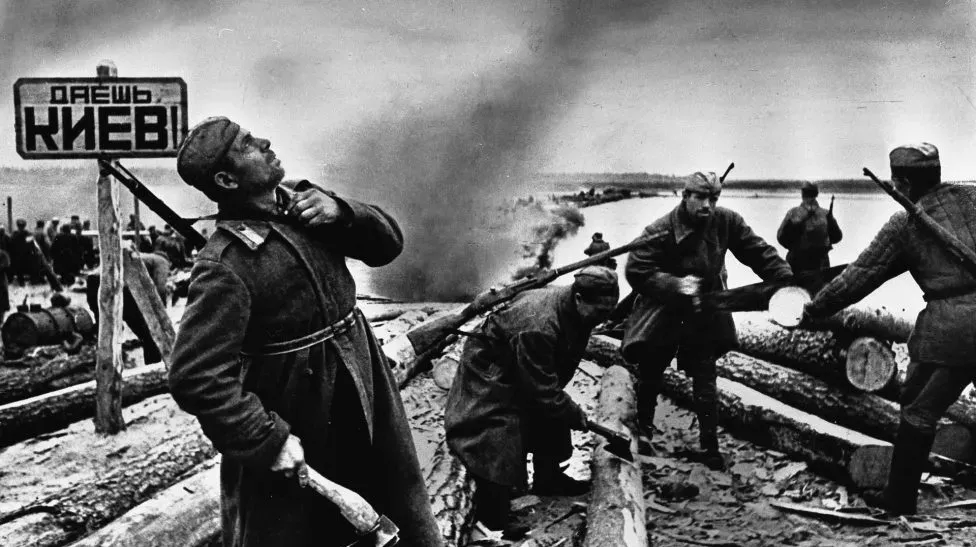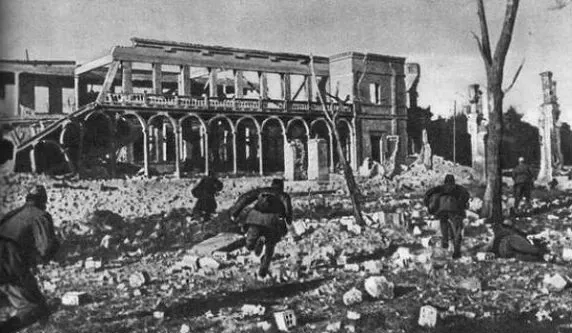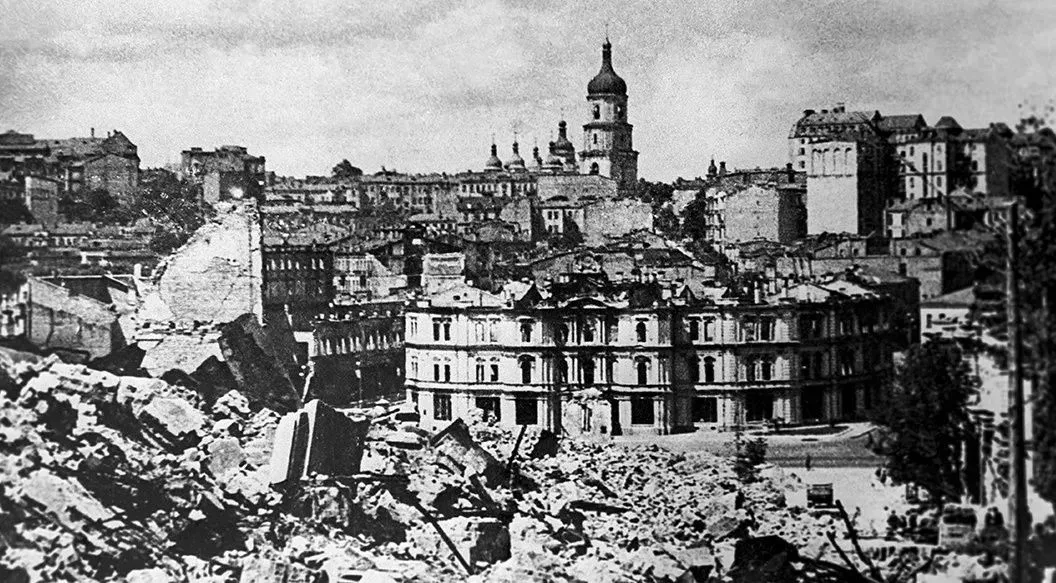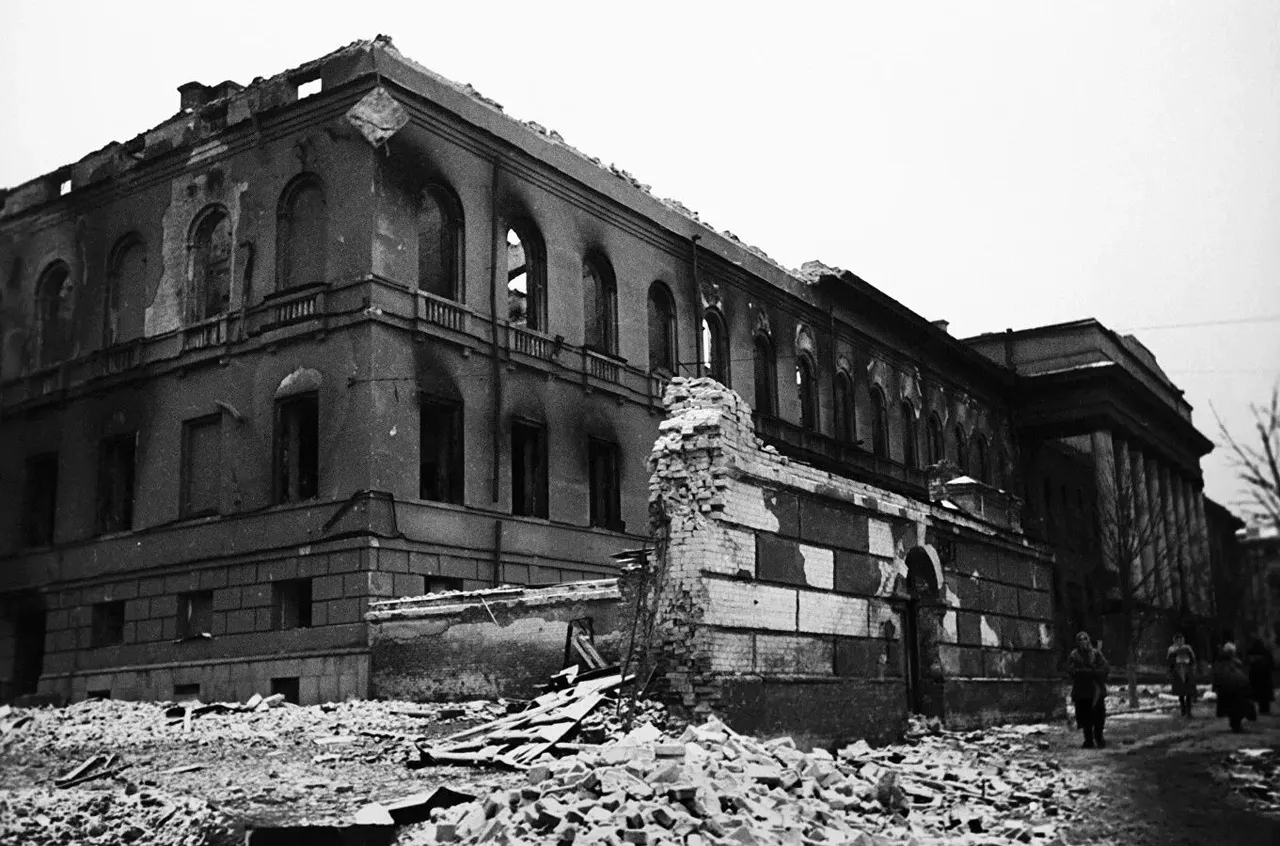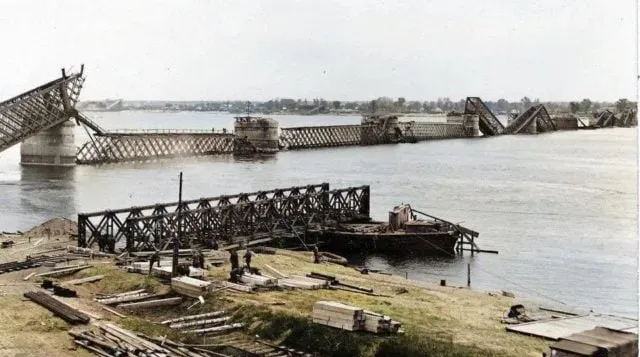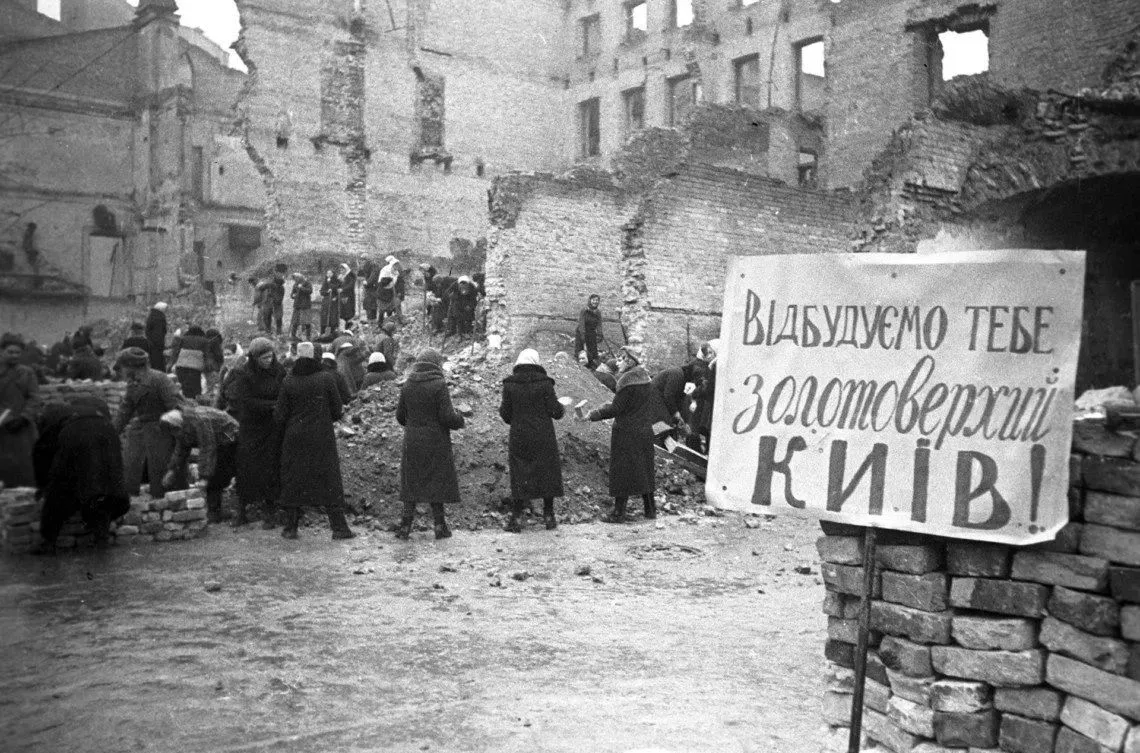Щорічно 6 листопада українська столиця відзначає річницю визволення від німецько-фашистських загарбників. У 2022 році виповнюється 79 років з того дня.
Радісна і , одночасно, сумна дата.
Радісна перш за все тому, що Київ, який пробув в окупації 778 днів, був нарешті звільнений.
А сумна, бо під час звільнення Києва втрати Червоної армії за оцінками деяких істориків склали до 150000 чоловік. І більшість серед цих втрат – українці.
Every year on November 6, the Ukrainian capital celebrates the anniversary of liberation from the German-fascist invaders. In 2022, it will be 79 years since that day.
A joyful and, at the same time, sad date.
I am glad, first of all, that Kyiv, which was under occupation for 778 days, was finally liberated.
And sad, because during the liberation of Kyiv, the losses of the Red Army, according to estimates of some historians, amounted to 150,000 people. And most of these losses are Ukrainians.
Верхівка сталінського СРСР віддала командуванню Червоної армії наказ: до 26-ї річниці Жовтневої революції звільнити Київ. За всяку ціну. Радянські генерали безжально кидали у бій погано навчених, екіпірованих та часом навіть неозброєних людей, лишень би здобути таку бажану перемогу.
Тим часом нацисти, розуміючи, що поразка неминуча, почали підривати та палити Київ. Київ був вщент зруйнований.
The leadership of the Stalinist USSR gave the command of the Red Army an order: to liberate Kyiv by the 26th anniversary of the October Revolution. At any cost. Soviet generals mercilessly threw poorly trained, equipped, and sometimes even unarmed people into battle, just to win such a desired victory.
Meanwhile, the Nazis, realizing that defeat was inevitable, began to blow up and burn Kyiv. Kyiv was completely destroyed.
Американські газети відзначали, що Київ з надзвичайно жвавого і красивого міста перетворився на власну тінь. Зокрема, кореспондент видання New York Herald Tribune, який відвідав Київ після звільнення написав: "Протягом своєї довгої, часто бурхливої історії нинішня столиця України переходила з рук одного переможця в руки іншого… Але ніколи перед тим окупант не висмоктував із нього стільки крові, як це зробили німці за два роки і шість тижнів свого останнього панування".
Він також вказував на побутові складнощі, з якими довелось боротись киянам. "Тепер люди вже стягуються з околиць та з підземель. Вони обшукують кожен зруйнований будинок, чи немає в ньому мін, і починають облаштовувати житло. Воду носять відрами з Дніпра або з якихось колодязів. Не повністю знищені будинки освітлюють гасовими лампами або простими свічками, тому що електростанції та газові станції знищені. Нема ніде центрального опалення. Для обігріву люди збирають дерев'яні уламки на вулицях і носять їх оберемками до будинків, щоб розпалити вогонь у приміщеннях без вікон та дверей. Ніде в селах не побачиш такого примітивного сільського життя, як тепер у Києві".
American newspapers noted that Kyiv had turned from an extremely lively and beautiful city into its own shadow. In particular, a correspondent of the New York Herald Tribune, who visited Kyiv after the liberation, wrote: "During its long, often stormy history, the current capital of Ukraine passed from the hands of one victor to the hands of another... But never before had the occupier drained so much blood from it as this made by the Germans in the two years and six weeks of their last reign."
He also pointed to the everyday difficulties that the people of Kyiv had to deal with. "Now people are already coming from the neighborhood and from the dungeons. They are searching every destroyed house for mines, and are starting to set up housing. Water is brought in buckets from the Dnieper or from some wells. Houses that are not completely destroyed are lit with kerosene lamps or simple candles, so that the power stations and gas stations are destroyed. There is no central heating anywhere. For heating, people collect scraps of wood on the streets and carry them in bundles to the houses to start fires in rooms without windows and doors. Nowhere in the villages can you see such a primitive village life as now in Kyiv".
Разом з тим кореспондент New York Times у матеріалі, що вийшов 30 листопада, відзначав, що Київ, попри значні руйнування та розграбовані культурні установи (музеї, бібліотеки) відновлювався досить швидко. "Після втечі німців радянська влада почала відновлювати місто. З'явилася газета "Правда" з додатком українською мовою, дозволено приватні підприємства, переважно ресторани, а радянський банк навіть позичає на це гроші", – йшлося у статті.
At the same time, the correspondent of the New York Times, in the article published on November 30, noted that Kyiv, despite significant destruction and looted cultural institutions (museums, libraries), was recovering quite quickly. "After the escape of the Germans, the Soviet authorities began to rebuild the city. The Pravda newspaper appeared with a supplement in Ukrainian, private enterprises, mainly restaurants, were allowed, and the Soviet bank even lent money for this," the article said.
Звільнення Києва відбулось напередодні Тегеранської конференції (28 листопада 1943 року), на якій очільники СРСР Йосип Сталін, Великої Британії Вінстон Черчиль та США Франклін Рузвельт мали прийняти рішення про відкриття другого фронту в Європі. І повернення під контроль Червоної армії найбільшого з окупованих німцями радянських міст було значним аргументом у цій дискусії. Тож увага всієї світової преси була прикута до цієї перемоги.
Дуже прикро, що після тих трагічних подій Київ знову став мішенню для нацистів. Тепер вже російських. І знов жертви серед мирного населення, знову руйнування. І методи , якими воюють росіяни нічим не відрізняються від тих часів. Те ж бездарне керівництво, безжальне знищення своїх солдат в угоду псевдо- перемог під чергову святкову дату. До того ж , вони взяли на озброєння все найгірше, що було у німецьких фашистів і схоже, з задоволенням це застосовують. І на міжнародній арені сьогодні росія використовує ту ж риторику, що Сталін в 1943 році. Показати західним країнам якісь перемоги, щоб додати собі ваги на міжнародній арені. Сьогодні захід чудово розуміє, що це 'гарна міна при поганій грі', але тим не менше, часто ще й досі в це вірить.
Після Перемоги Україна буде швидко відбудована. Український народ вже має такий досвід.
Слава ЗСУ! Слава Україні!
The liberation of Kyiv took place on the eve of the Tehran Conference (November 28, 1943), at which the leaders of the USSR, Joseph Stalin, Great Britain, Winston Churchill, and the United States, Franklin Roosevelt, were to decide on the opening of a second front in Europe. And the return to the control of the Red Army of the largest of the Soviet cities occupied by the Germans was a significant argument in this discussion. So the attention of the entire world press was focused on this victory.
It is very unfortunate that after those tragic events, Kyiv again became a target for the Nazis. Now it's Russian. And again victims among the civilian population, again destruction. And the methods by which the Russians fight are no different from those times. The same incompetent leadership, merciless destruction of their soldiers in an agreement of pseudo-victories for another holiday date. In addition, they adopted all the worst that the German fascists had and it seems that they use it with pleasure. And in the international arena today, Russia uses the same rhetoric that Stalin used in 1943. Show Western countries some victories to add weight to themselves on the international stage. Today, the West perfectly understands that it is a "good mine with a bad game", but nevertheless, it often still believes in it.
After the Victory, Ukraine will be quickly rebuilt. The Ukrainian people already have such experience.
Glory to the Armed Forces! Glory to Ukraine!
